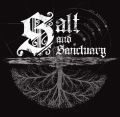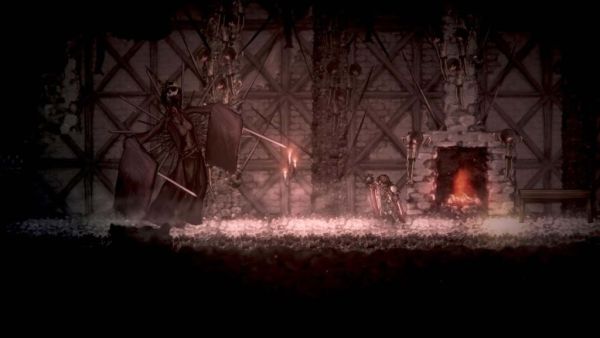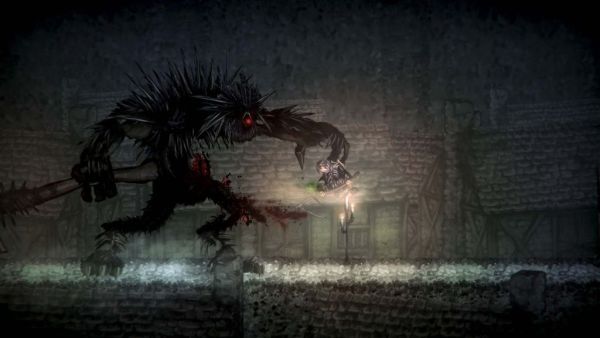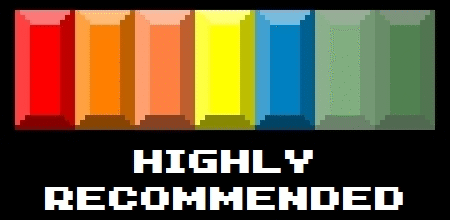
It is often said that imitation is the highest form of flattery. If this is true, the folks at From Software must be fanning themselves like a Victorian lady in search of a fainting couch, because Salt and Sanctuary is an unashamed imitation of Dark Souls. In fact, licensing aside, it essentially is a Souls game. Of course, Salt and Sanctuary is not the first game to copy the formula established by From Software, but where others have become mired in being too much like Dark Souls, Salt and Sanctuary strikes out in new, interesting directions and successfully transposes the Souls style onto a 2D action-platformer.
Platforms: PS4
Publisher: Ska Studios
Developer: Ska Studios
Genre: The “Dark Souls” of 2D Platformers
Release Date: March 15, 2016
ESRB Rating: Mature
 In 2009, I began to hear rumblings about a PS3 game called Demon’s Souls. An EU release had yet to be confirmed, so shipping it to the UK would mean paying for delivery and eating the cost of the exchange rate, bringing Demon’s Souls to double the price of a normal PS3 game. I was in school at the time, and any money I had was scraped together from working evenings in a fast food restaurant, so it was rare that I even paid for one full-priced release. I’d never imported a game before, but hearing about this weird new game that matched high production values with an almost retrograde impenetrability piqued my interest so intensely that I had to have it.
In 2009, I began to hear rumblings about a PS3 game called Demon’s Souls. An EU release had yet to be confirmed, so shipping it to the UK would mean paying for delivery and eating the cost of the exchange rate, bringing Demon’s Souls to double the price of a normal PS3 game. I was in school at the time, and any money I had was scraped together from working evenings in a fast food restaurant, so it was rare that I even paid for one full-priced release. I’d never imported a game before, but hearing about this weird new game that matched high production values with an almost retrograde impenetrability piqued my interest so intensely that I had to have it.
Seven years later, what seemed old-fashioned turned out to have been cutting edge, as the Soul’s series has become incredibly popular and spawned a slew of imitators. One of the first, and most famous, of these imitators was Lords of the Fallen, a game that seemed to have started development with the idea of being Dark Souls but easier. This seemed, to me at least, something of a wrong-headed starting point; not so much an interesting variation on the Souls formula but a stripping away of one of its core tenets.
Salt and Sanctuary takes the Dark Souls formula and applies it to a 2D action game without sacrificing any of what makes the Souls games so great. In fact, one might argue that Salt and Sanctuary adheres too strictly to the Souls formula. Think of any mechanic, any enemy type, any environment that was represented in a previous Souls game, and you can be almost certain that you’ll find its equivalent in Salt and Sanctuary. For those who aren’t familiar with Dark Souls, you spend your time in Salt and Sanctuary fighting your way through a world populated by tough enemies and tougher bosses that give Salt, a currency used to level up your character’s attributes, when they die. The combat prioritises animation, and your ability to swing your weapon and block attacks is governed by a stamina bar that depletes quickly. Exploration is integral to the experience, and finding your way through the world can be as challenging as the combat. As for the story, like in any Souls game, it’s somewhat peripheral, alluded to through item descriptions or the confused mumblings of the amnesiac husks that people the game’s world.

The most significant way in which Salt and Sanctuary differs from its inspiration is in the platforming elements of the game. At first, the platforming is unremarkable, with your character only able to jump and climb onto ledges, but as you acquire abilities such as the wall jump or air dash, the game opens up and introduces the player to platforming sections that are sometimes as challenging as the combat. The best loot in the game is frequently hidden in areas that initially seem inaccessible, and you’ll end up comboing together the various platforming moves to reach areas that it feels like the developers didn’t intend for you to reach. Of course, Ska Studios very much intend for you to explore every corner of the game, and this means that the exploration always feels great; when you find some strange ring at the top of a tree, or wall jump your way to a new helmet, it feels like you must be the only person in the world to have found it.
Much of the appeal of Dark Souls comes from the fact that the world is so obscure and arcane that everything you do makes you feel uniquely clever, and when Salt and Sanctuary manages to apply this same sensation to the platforming, it feels like a real achievement – an application of the Souls formula onto something else. It is unfortunate that, while the platforming is often challenging and rewarding, it is just as frequently difficult for the sake of being difficult, and it is in these moments that it feels as though the game loses sight of what makes Dark Souls great. I am not opposed to difficult platforming – Super Meat Boy remains one of my favourite games – but the jumping and climbing doesn’t feel tight enough in Salt and Sanctuary, and so more often than not, a particularly difficult platforming section is frustrating rather than challenging. What’s more, one can often feel Ska Studios being torn between two contradictory anxieties: Is this game too much like Dark Souls? Or is it rather not enough like Dark Souls?
These questions form an undercurrent that are as much the player’s concern as the developers’, but tend to remain a sort of thought exercise, something to chew over as you play. Unfortunately, these anxieties occasionally become erumpent and make themselves evident in the gameplay. In the latter half of Salt and Sanctuary, you are faced with an incredibly difficult platforming section. Once you get through that, you’re confronted by three enemies that are essentially impossible to defeat. In tandem, these two moments are incredibly frustrating, and feel motivated not by any well-considered decisions, but rather a sort of self-correcting impulse by Ska Studios. It is as if, after making you complete a platforming section that is decidedly unlike anything from Dark Souls, the developers feel impelled to confront the player with some of the most brutal combat in the game, so brutal, in, fact that it feels like a parody of Dark Souls.

Though it is true that the platforming offers frustrations, the combat in Salt and Sanctuary is almost perfectly pitched. While the game follows Dark Souls in many ways – slow attacks with high animation-priority, rolling and blocking to avoid damage – Ska Studios does a great job of combining this with the 2D combat from their previous games. As such, Salt and Sanctuary’s combat places more of an emphasis on combos, and even encourages aerials. While this might not sound like much of a difference, playing these types of games demands that the player learns the subtleties of the systems, so anyone who has played Dark Souls will appreciate the ways in which Salt and Sanctuary’s combat departs from the Souls model.
The narrative in Salt and Sanctuary is fairly muted, and feels like a sort of “best of” of the games that it follows, taking the high fantasy action of the Souls games and combining it with the Lovecraftian Old Gods of Bloodborne. While I wasn’t overly impressed by the narrative of Salt and Sanctuary, the Souls universe (if such a thing can be said to exist) is inherently able to incorporate other games into itself. From the start, the Souls games have been concerned with the circularity of history and the cyclical, rather than linear, nature of time, and are perhaps best thought of as a meditation on the concept of eternal recurrence. Licensing issues have, of course, prevented Demon’s Souls, Dark Souls, and Bloodborne from overtly overlapping, but the games have always alluded to a kind of connectedness in the forgetfulness of the characters, and the way that the architecture and environments seem designed to evoke past games. As such, Salt and Sanctuary fits into this continuum with relative ease, and is enriched by – and indeed enriches – previous and future Souls games.
While Salt and Sanctuary might not be as hard as many Dark Souls fans would like, the way that it both successfully replicates and twists Souls’ gameplay makes it easy to recommend for anyone who has enjoyed Demon’s Souls, Dark Souls, or Bloodborne. If you haven’t enjoyed these games, Salt and Sanctuary is a great place to get acquainted with the series and finally see why people love these games so much.

Review Disclosure: A review copy of Salt and Sanctuary was provided by Ska Studios for the purposes of this review.







